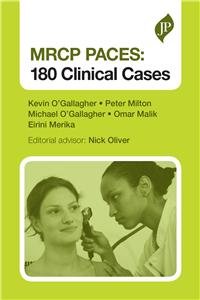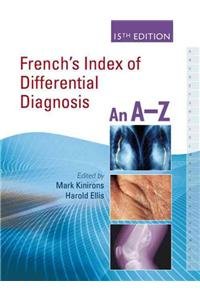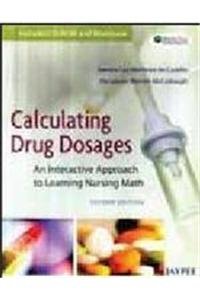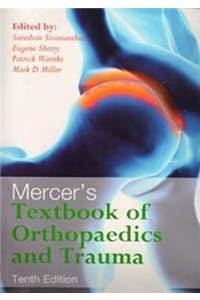Only logged in customers who have purchased this product may leave a review.
Sale!
MRCP PACES: 180 Clinical Cases (PAPERBACK) | Released: 01 Sep 2012
By: Gallagher Kevino (Author) Publisher: Jp Medical Ltd10.00% Off Original price was: 3,150.00$.2,835.00$Current price is: 2,835.00$.
You save 315.00$
MRCP PACES: 180 Clinical Cases offers a comprehensive set of over 180 practice cases for candidates preparing for the MRCP Part 2 Clinical Examination (PACES). The cases have been selected to represent the full range of the syllabus, including the new station 5, and provide the clinical knowledge required to... Read More
In stock
Ships within 1-2 Business Days

100% Orginal Books

Easy Replacement

Certified product

Secure Checkout

On time delivery
Author:
![]()
Gallagher Kevino
Publisher Name:
![]()
Jp Medical Ltd
Language:
![]()
English
Binding:
![]()
(PAPERBACK)
About The Book
MRCP PACES: 180 Clinical Cases offers a comprehensive set of over 180 practice cases for candidates preparing for the MRCP Part 2 Clinical Examination (PACES). The cases have been selected to represent the full range of the syllabus, including the new station 5, and provide the clinical knowledge required to pass the exam. Along with an introduction that highlights the approaches required for the different stations, the cases in this book provide an essential revision tool designed to maximise the chances of exam success. • 180 clinical cases, covering the breadth of topics and skills tested in the exam • All cases are structured to allow you to provide a comprehensive model answer within the short time available • Guidance boxes provide valuable insights and clarify difficult concepts,improving your chances of picking up extra marks About the AuthorKevin O’Gallagher MBBS BA (Hons) MRCP (UK)
Daniel Knight MBBS BSc (Hons) MRCP (UK)
Michael O’Gallagher MBBCh BAO
Eirini Merika MBBS BSc (Hons) MRCP (UK)
Omar Malik MBBS BSc PhD FRCP
Peter TK Milton MBBS BSc (Hons) MRCP (UK)
Nick Oliver MBBS BSc (Hons) FRCPTable of Contents: Chapter 1 Cardiovascular system (station 3) 1
Systolic murmur
Case 1: Aortic stenosis 2
Case 2: Mitral regurgitation 5
Case 3: Ventricular septal defect 8
Case 4: Hypertrophic obstructive cardiomyopathy 10
Case 5: Tricuspid regurgitation 12
Case 6: Pulmonary stenosis 15
Diastolic murmur
Case 7: Mitral stenosis 16
Case 8: Aortic regurgitation 19
Case 9: Pulmonary regurgitation 21
Mixed valve disease: distinguishing the dominant murmur
Case 10: Mixed aortic valve disease 24
Case 11: Mixed mitral valve disease 25
Scars and clicks - the cardiothoracic patient
Case 12: Prosthetic valves and cardiac surgery 26
Oedema, crepitations, and a raised jugular
venous pressure: the failing heart
Case 13: Cardiac failure 30
Case 14: The infraclavicular mass – pacemakers 33
implantable devices
Abnormal pulses
Case 15: The irregular pulse: atrial fibrillation 36
Case 16: Coarctation of the aorta 38
Splinter haemorrhages and a murmur: the infected valve
Case 17: Infective endocarditis 40
Congenital heart disease and complex cases
Case 18: Pulmonary hypertension 43
Case 19: Atrial septal defect 45
Case 20: Patent ductus arteriosus 46
Case 21: Ebstein’s anomaly: the cyanosed 48
patient with a murmur
Case 22: Tetralogy of Fallot 50
Case 23: Eisenmenger’s syndrome 51
Case 24: Dextrocardia 54
Chapter 2 Nervous system (station 3) 55
Examination of cranial nerves: visual field defects
Case 25: Monocular blindness 56
Case 26: Homonymous hemianopia 57
Case 27: Bitemporal hemianopia 58
Case 28: Homonymous quadrantanopia 59Contents
viii
Examination of cranial nerves: ophthalmoplegia
Case 29: Sixth nerve palsy 60
Case 30: Fourth nerve palsy 62
Case 31: Internuclear ophthalmoplegia – 63
multiple sclerosis
Examination of cranial nerves: pupillary problems with ptosis
Case 32: Ptosis, large pupil and 65
ophthalmoplegia: third nerve palsy
Case 33: Ptosis and small pupil: Horner syndrome 67
Case 34: Bilateral ptosis with fatigability: 68
myasthenia gravis
Examination of cranial nerves: pupillary problems without ptosis
Case 35: Relative afferent pupillary defect (RAPD) 70
Case 36: Unilateral large pupil in a young 72
female – Holmes–Adie pupil
Case 37: Bilateral small pupils: 73
Argyll Robertson pupils
Examination of cranial nerves: cranial nerves V, VII and VIII
Case 38: Facial weakness 74
Case 39: Conductive hearing loss 76
Case 40: Sensorineural hearing loss 78
Case 41: V, VII, VIII cranial nerves – 79
cerebellopontine angle
Examination of cranial nerves: assessment of speech
Case 42: Dysphasia 81
Case 43: Dysarthria – bulbar palsy 82
Examination of cranial nerves: complex presentations
Case 44: Lateral medullary syndrome 84
Case 45: Jugular foramen syndrome 85
Examination of upper limbs: weakness
Case 46: Myotonic dystrophy 86
Case 47: Cervical myelopathy 88
Case 48: Unilateral arm weakness – 89
neuralgic amyotrophy
Examination of upper limbs: tremor and assessment of coordination
Case 49: Resting tremor – Parkinsonism 90
Case 50: Intention tremor and problems with 92
co-ordination – cerebellar syndrome
Examination of upper limbs: spinal cord syndromes
Case 51: Central cord syndrome – syringomyelia 93
Case 52: Brown–Séquard (hemi-cord) syndrome 96
Case 53: Anterior cord syndrome 98
Examination of lower limbs: weakness
Case 54: Spastic paraparesis 100
Case 55: Proximal myopathy 101
Examination of lower limbs: sensory disturbance
Case 56: Glove and stocking distributions – 102
sensory polyneuropathy
Examination of lower limbs: the deformed foot – pes cavus
Case 57: Friedreich’s ataxia 104
Case 58: Charcot–Marie–Tooth disease 105
(hereditary sensorimotor neuropathy– type 1)Contents
Examination of lower limbs: assessment of gait
Case 59: Shuffling gait – Parkinson’s disease 106
Case 60: Ataxic gait 107
Case 61: Unilateral high-stepping gait 107
Case 62: Spastic hemi-paretic gait 108
Case 63: Waddling gait 110
Examination of lower limbs: cases of note
Case 64: Cauda equina syndrome 110
Case 65: Absent ankle jerks with extensor 112
plantar reflexes – sub-acute
degeneration of the cord
Chapter 3 Respiratory system (station 1) 115
Crepitations
Case 66: Pulmonary fibrosis 116
Case 67: Consolidation 118
Case 68: Bronchiectasis 120
Dullness to percussion
Case 69: Pleural effusion 122
Case 70: Collapse 124
Wheeze
Case 71: Chronic obstructive pulmonary 125
disease
Chest wall scars: the thoracic surgery patient
Case 72: Lobectomy 128
Case 73: Pneumonectomy 129
Case 74: Lung transplantation 130
Diagnostic clues in the respiratory patient: facial signs
Case 75: Plethoric face and dilated chest veins – 131
superior vena cava obstruction
Case 76: Horner’s syndrome: Pancoast’s tumour 133
Case 77: Cushingoid appearance 135
Diagnostic clues in the respiratory patient: peripheral signs
Case 78: Abnormal nails with pleural effusions 136
and lymphadenopathy – yellow nail syndrome
Case 79: Signs of right-sided heart failure – 138
cor pulmonale
Chapter 4 Abdominal system (station 1) 141
The liver patient
Case 80: The syndrome of chronic liver disease 142
Case 81: Organomegaly – isolated 146
hepatomegaly
Case 82: The distended abdomen – ascites 147
Case 83: Portal hypertension 149
Case 84: Abnormal skin pigmentation – jaundice 151
Case 85: Abnormal skin pigmentation – haemachromatosis 154
Case 86: Periorbital xanthelasma – primary 156
biliary cirrhosis
The renal patient
Case 87: The patient requiring renal replacement therapy 157
Case 88: Bilateral ballotable kidneys 159
ixContents
Case 89: Iliac fossa scar with a palpable mass – renal transplant 160
Case 90: Flank scar – nephrectomy 162
Spleen and other abdominal cases
Case 91: Splenomegaly 163
Case 92: Felty’s syndrome 165
Case 93: Multiple abdominal scars 166
Case 94: Rooftop incision 167
Case 95: Obesity with evidence of laparoscopic procedure 169
Chapter 5 Station 5 171
Hands: symmetrical deforming polyarthropathy
Case 96: Rheumatoid arthritis 172
Case 97: Psoriatic arthritis 175
Case 98: Jaccoud’s arthropathy 177
Hands: disease distal interphalangeal joints
Case 99: Osteoarthritis 179
Hands: abnormal hands with skin changes
Case 100: Sclerodactyly/systemic sclerosis 181
Hands: single swollen metocarpophalangeal joint
Case 101: Gout 182
Hands: neurological signs in the hands
Case 102: Carpal tunnel syndrome 184
Case 103: Wrist drop – radial nerve lesion 185
Case 104: Ulnar nerve lesion 187
Fundoscopy: diseased lens
Case 105: Cataracts 188
Fundoscopy: diseased retina
Case 106: Diabetic retinopathy 190
Case 107: Hypertensive retinopathy 194
Case 108: Retinitis pigmentosa 195
Case 109: CMV retinitis 197
Fundoscopy: abnormal optic discs
Case 110: Optic atrophy 198
Case 111: Papilloedema 200
Case 112: Foster Kennedy syndrome 201
Endocrinology
Case 113: Thyrotoxicosis 202
Case 114: Hypothyroidism 205
Case 115: Acromegaly 206
Case 116: Weight gain and easy bruising – 208
Cushingoid appearance
Case 117: Gynaecomastia 209
Case 118: Pseudohypoparathyroidism – 211
Albright’s hereditary osteodystrophy
Dermatology: chronic skin conditions
Case 119: Chronic plaque psoriasis 212
Case 120: Atopic dermatitis or atopic eczema 216
Dermatology: manifestations of systemic disease
Case 121: Pyoderma gangrenosum 218
Case 122: Vasculitis (Henoch–Schönlein purpura) 221
Case 123: Chronic venous insufficiency 223
xContents
Case 124: Cutaneous lupus erythematosus 226
Case 125: Discoid lupus erythematosus 230
Case 126: Dermatomyositis 231
Case 127: Alopecia areata 233
Case 128: Sarcoidosis 237
Genetic disease
Case 129: Tuberous sclerosis 239
Case 130: Neurofibromatosis 241
Dermatology spot diagnoses
Case 131 & 132: Dermatology spot diagnoses 245
Commonly encountered spot diagnoses
Case 133: Ankylosing spondylitis 247
Case 134: Marfan syndrome 249
Case 135: Turner syndrome 252
Symptoms as a presenting complaint
Case 136: Tremor 254
Case 137: Seizures 255
Chapter 6 History taking (station 2) 257
Cardiovascular
Case 138: Chest pain 258
Case 139: Irregular pulse 261
Case 140: Palpitations 265
Case 141: Ankle swelling 268
Case 142: Raised lipids 271
Case 143: Hypertension 273
Respiratory
Case 144: Breathlessness and wheeze – 277
new diagnosis of asthma
Case 145: Shortness of breath and wheeze – 280
established diagnosis of asthma
Case 146: Wheeze – established chronic 282
obstructive pulmonary disease
Case 147: Haemoptysis in the returning traveller 285
Case 148: Persistent/change in cough – 287
investigation of cancer
Abdominal
Case 149: Change in bowel habit – malignancy 290
Case 150: Change in bowel habit – established 293
inflammatory bowel disease
Case 151: Difficulty in swallowing 295
Case 152: Cirrhotic liver disease 297
Case 153: Previous renal transplant 299
Neurology
Case 154: Headache 303
Case 155: Visual disturbance 306
Case 156: Tremor 308
Case 157: Established multiple sclerosis 310
Infectious disease
Case 158: Fever in the returning traveller 313
Rheumatology
Case 159: Sore, stiff hands 315
Case 160: Back pain 316
xiContents
Endocrinology
Case 161: Established diabetes 318
Case 162: Heat intolerance and weight loss 319
Case 163: Diabetes insipidus 321
Case 164: Weight gain 323
Chapter 7 Communication skills and ethical scenarios 327
(station 4)
Consent and capacity
Case 165: Informed consent for an invasive 328
investigation or procedure – chest drain insertion
Case 166: The patient refusing to consent 329
Case 167: Consenting for a clinical trial 330
Case 168: Assessing capacity 332
Case 169: The patient who lacks capacity 333
Breaking bad news and counseling patients
Case 170: Breaking bad news to a relative 335
Case 171: The decision to resuscitate 336
Case 172: Withdrawing (life-dependent) care 337
Case 173: Brainstem death testing 338
Case 174: Organ donation and harvesting 340
Case 175: Requesting a hospital postmortem 341
Case 176: Driving with disease 342
Case 177: Genetic counselling 345
Case 178: Percutaneous endoscopic 347
gastrostomy feeding
Case 179: HIV testing – recent unprotected sex 348
Case 180: HIV testing – needlestick injury 351
When care goes wrong
Case 181: Dealing with complaints – medical errors 353
Dealing with colleagues
Case 182: The trainee in difficulty 355
xChapter 1 Cardiovascular system (station 3) 1
Systolic murmur
Case 1: Aortic stenosis 2
Case 2: Mitral regurgitation 5
Case 3: Ventricular septal defect 8
Case 4: Hypertrophic obstructive cardiomyopathy 10
Case 5: Tricuspid regurgitation 12
Case 6: Pulmonary stenosis 15
Diastolic murmur
Case 7: Mitral stenosis 16
Case 8: Aortic regurgitation 19
Case 9: Pulmonary regurgitation 21
Mixed valve disease: distinguishing the dominant murmur
Case 10: Mixed aortic valve disease 24
Case 11: Mixed mitral valve disease 25
Scars and clicks - the cardiothoracic patient
Case 12: Prosthetic valves and cardiac surgery 26
Oedema, crepitations, and a raised jugular
venous pressure: the failing heart
Case 13: Cardiac failure 30
Case 14: The infraclavicular mass – pacemakers 33
implantable devices
Abnormal pulses
Case 15: The irregular pulse: atrial fibrillation 36
Case 16: Coarctation of the aorta 38
Splinter haemorrhages and a murmur: the infected valve
Case 17: Infective endocarditis 40
Congenital heart disease and complex cases
Case 18: Pulmonary hypertension 43
Case 19: Atrial septal defect 45
Case 20: Patent ductus arteriosus 46
Case 21: Ebstein’s anomaly: the cyanosed 48
patient with a murmur
Case 22: Tetralogy of Fallot 50
Case 23: Eisenmenger’s syndrome 51
Case 24: Dextrocardia 54
Chapter 2 Nervous system (station 3) 55
Examination of cranial nerves: visual field defects
Case 25: Monocular blindness 56
Case 26: Homonymous hemianopia 57
Case 27: Bitemporal hemianopia 58
Case 28: Homonymous quadrantanopia 59Contents
viii
Examination of cranial nerves: ophthalmoplegia
Case 29: Sixth nerve palsy 60
Case 30: Fourth nerve palsy 62
Case 31: Internuclear ophthalmoplegia – 63
multiple sclerosis
Examination of cranial nerves: pupillary problems with ptosis
Case 32: Ptosis, large pupil and 65
ophthalmoplegia: third nerve palsy
Case 33: Ptosis and small pupil: Horner syndrome 67
Case 34: Bilateral ptosis with fatigability: 68
myasthenia gravis
Examination of cranial nerves: pupillary problems without ptosis
Case 35: Relative afferent pupillary defect (RAPD) 70
Case 36: Unilateral large pupil in a young 72
female – Holmes–Adie pupil
Case 37: Bilateral small pupils: 73
Argyll Robertson pupils
Examination of cranial nerves: cranial nerves V, VII and VIII
Case 38: Facial weakness 74
Case 39: Conductive hearing loss 76
Case 40: Sensorineural hearing loss 78
Case 41: V, VII, VIII cranial nerves – 79
cerebellopontine angle
Examination of cranial nerves: assessment of speech
Case 42: Dysphasia 81
Case 43: Dysarthria – bulbar palsy 82
Examination of cranial nerves: complex presentations
Case 44: Lateral medullary syndrome 84
Case 45: Jugular foramen syndrome 85
Examination of upper limbs: weakness
Case 46: Myotonic dystrophy 86
Case 47: Cervical myelopathy 88
Case 48: Unilateral arm weakness – 89
neuralgic amyotrophy
Examination of upper limbs: tremor and assessment of coordination
Case 49: Resting tremor – Parkinsonism 90
Case 50: Intention tremor and problems with 92
co-ordination – cerebellar syndrome
Examination of upper limbs: spinal cord syndromes
Case 51: Central cord syndrome – syringomyelia 93
Case 52: Brown–Séquard (hemi-cord) syndrome 96
Case 53: Anterior cord syndrome 98
Examination of lower limbs: weakness
Case 54: Spastic paraparesis 100
Case 55: Proximal myopathy 101
Examination of lower limbs: sensory disturbance
Case 56: Glove and stocking distributions – 102
sensory polyneuropathy
Examination of lower limbs: the deformed foot – pes cavus
Case 57: Friedreich’s ataxia 104
Case 58: Charcot–Marie–Tooth disease 105
(hereditary sensorimotor neuropathy– type 1)Contents
Examination of lower limbs: assessment of gait
Case 59: Shuffling gait – Parkinson’s disease 106
Case 60: Ataxic gait 107
Case 61: Unilateral high-stepping gait 107
Case 62: Spastic hemi-paretic gait 108
Case 63: Waddling gait 110
Examination of lower limbs: cases of note
Case 64: Cauda equina syndrome 110
Case 65: Absent ankle jerks with extensor 112
plantar reflexes – sub-acute
degeneration of the cord
Chapter 3 Respiratory system (station 1) 115
Crepitations
Case 66: Pulmonary fibrosis 116
Case 67: Consolidation 118
Case 68: Bronchiectasis 120
Dullness to percussion
Case 69: Pleural effusion 122
Case 70: Collapse 124
Wheeze
Case 71: Chronic obstructive pulmonary 125
disease
Chest wall scars: the thoracic surgery patient
Case 72: Lobectomy 128
Case 73: Pneumonectomy 129
Case 74: Lung transplantation 130
Diagnostic clues in the respiratory patient: facial signs
Case 75: Plethoric face and dilated chest veins – 131
superior vena cava obstruction
Case 76: Horner’s syndrome: Pancoast’s tumour 133
Case 77: Cushingoid appearance 135
Diagnostic clues in the respiratory patient: peripheral signs
Case 78: Abnormal nails with pleural effusions 136
and lymphadenopathy – yellow nail syndrome
Case 79: Signs of right-sided heart failure – 138
cor pulmonale
Chapter 4 Abdominal system (station 1) 141
The liver patient
Case 80: The syndrome of chronic liver disease 142
Case 81: Organomegaly – isolated 146
hepatomegaly
Case 82: The distended abdomen – ascites 147
Case 83: Portal hypertension 149
Case 84: Abnormal skin pigmentation – jaundice 151
Case 85: Abnormal skin pigmentation – haemachromatosis 154
Case 86: Periorbital xanthelasma – primary 156
biliary cirrhosis
The renal patient
Case 87: The patient requiring renal replacement therapy 157
Case 88: Bilateral ballotable kidneys 159
ixContents
Case 89: Iliac fossa scar with a palpable mass – renal transplant 160
Case 90: Flank scar – nephrectomy 162
Spleen and other abdominal cases
Case 91: Splenomegaly 163
Case 92: Felty’s syndrome 165
Case 93: Multiple abdominal scars 166
Case 94: Rooftop incision 167
Case 95: Obesity with evidence of laparoscopic procedure 169
Chapter 5 Station 5 171
Hands: symmetrical deforming polyarthropathy
Case 96: Rheumatoid arthritis 172
Case 97: Psoriatic arthritis 175
Case 98: Jaccoud’s arthropathy 177
Hands: disease distal interphalangeal joints
Case 99: Osteoarthritis 179
Hands: abnormal hands with skin changes
Case 100: Sclerodactyly/systemic sclerosis 181
Hands: single swollen metocarpophalangeal joint
Case 101: Gout 182
Hands: neurological signs in the hands
Case 102: Carpal tunnel syndrome 184
Case 103: Wrist drop – radial nerve lesion 185
Case 104: Ulnar nerve lesion 187
Fundoscopy: diseased lens
Case 105: Cataracts 188
Fundoscopy: diseased retina
Case 106: Diabetic retinopathy 190
Case 107: Hypertensive retinopathy 194
Case 108: Retinitis pigmentosa 195
Case 109: CMV retinitis 197
Fundoscopy: abnormal optic discs
Case 110: Optic atrophy 198
Case 111: Papilloedema 200
Case 112: Foster Kennedy syndrome 201
Endocrinology
Case 113: Thyrotoxicosis 202
Case 114: Hypothyroidism 205
Case 115: Acromegaly 206
Case 116: Weight gain and easy bruising – 208
Cushingoid appearance
Case 117: Gynaecomastia 209
Case 118: Pseudohypoparathyroidism – 211
Albright’s hereditary osteodystrophy
Dermatology: chronic skin conditions
Case 119: Chronic plaque psoriasis 212
Case 120: Atopic dermatitis or atopic eczema 216
Dermatology: manifestations of systemic disease
Case 121: Pyoderma gangrenosum 218
Case 122: Vasculitis (Henoch–Schönlein purpura) 221
Case 123: Chronic venous insufficiency 223
xContents
Case 124: Cutaneous lupus erythematosus 226
Case 125: Discoid lupus erythematosus 230
Case 126: Dermatomyositis 231
Case 127: Alopecia areata 233
Case 128: Sarcoidosis 237
Genetic disease
Case 129: Tuberous sclerosis 239
Case 130: Neurofibromatosis 241
Dermatology spot diagnoses
Case 131 & 132: Dermatology spot diagnoses 245
Commonly encountered spot diagnoses
Case 133: Ankylosing spondylitis 247
Case 134: Marfan syndrome 249
Case 135: Turner syndrome 252
Symptoms as a presenting complaint
Case 136: Tremor 254
Case 137: Seizures 255
Chapter 6 History taking (station 2) 257
Cardiovascular
Case 138: Chest pain 258
Case 139: Irregular pulse 261
Case 140: Palpitations 265
Case 141: Ankle swelling 268
Case 142: Raised lipids 271
Case 143: Hypertension 273
Respiratory
Case 144: Breathlessness and wheeze – 277
new diagnosis of asthma
Case 145: Shortness of breath and wheeze – 280
established diagnosis of asthma
Case 146: Wheeze – established chronic 282
obstructive pulmonary disease
Case 147: Haemoptysis in the returning traveller 285
Case 148: Persistent/change in cough – 287
investigation of cancer
Abdominal
Case 149: Change in bowel habit – malignancy 290
Case 150: Change in bowel habit – established 293
inflammatory bowel disease
Case 151: Difficulty in swallowing 295
Case 152: Cirrhotic liver disease 297
Case 153: Previous renal transplant 299
Neurology
Case 154: Headache 303
Case 155: Visual disturbance 306
Case 156: Tremor 308
Case 157: Established multiple sclerosis 310
Infectious disease
Case 158: Fever in the returning traveller 313
Rheumatology
Case 159: Sore, stiff hands 315
Case 160: Back pain 316
xiContents
Endocrinology
Case 161: Established diabetes 318
Case 162: Heat intolerance and weight loss 319
Case 163: Diabetes insipidus 321
Case 164: Weight gain 323
Chapter 7 Communication skills and ethical scenarios 327
(station 4)
Consent and capacity
Case 165: Informed consent for an invasive 328
investigation or procedure – chest drain insertion
Case 166: The patient refusing to consent 329
Case 167: Consenting for a clinical trial 330
Case 168: Assessing capacity 332
Case 169: The patient who lacks capacity 333
Breaking bad news and counseling patients
Case 170: Breaking bad news to a relative 335
Case 171: The decision to resuscitate 336
Case 172: Withdrawing (life-dependent) care 337
Case 173: Brainstem death testing 338
Case 174: Organ donation and harvesting 340
Case 175: Requesting a hospital postmortem 341
Case 176: Driving with disease 342
Case 177: Genetic counselling 345
Case 178: Percutaneous endoscopic 347
gastrostomy feeding
Case 179: HIV testing – recent unprotected sex 348
Case 180: HIV testing – needlestick injury 351
When care goes wrong
Case 181: Dealing with complaints – medical errors 353
Dealing with colleagues
Case 182: The trainee in difficulty 355
x










Reviews
There are no reviews yet.